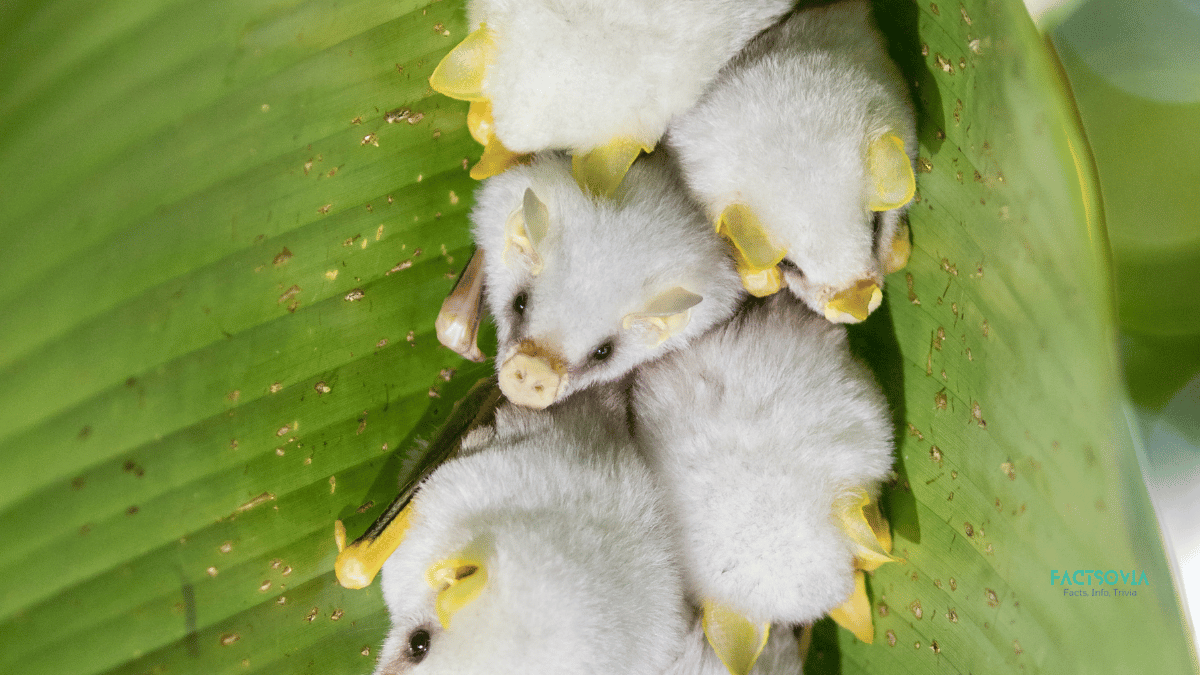We use affiliate links to run our site. When you buy through links on our site, we may earn an affiliate commission, without any added cost to you. Learn more
White bats are one of nature’s camouflage masters. These pale-furred flyers have evolved to blend in with their surroundings across Central and South America, Australia, and beyond. Their ghostly white coats allow them to roost undetected in caves, forests, and more.
There are several species of bats that are commonly referred to as “white bats” due to their predominantly white fur. Here are some examples:
1. Honduran White Bat (Ectophylla alba):
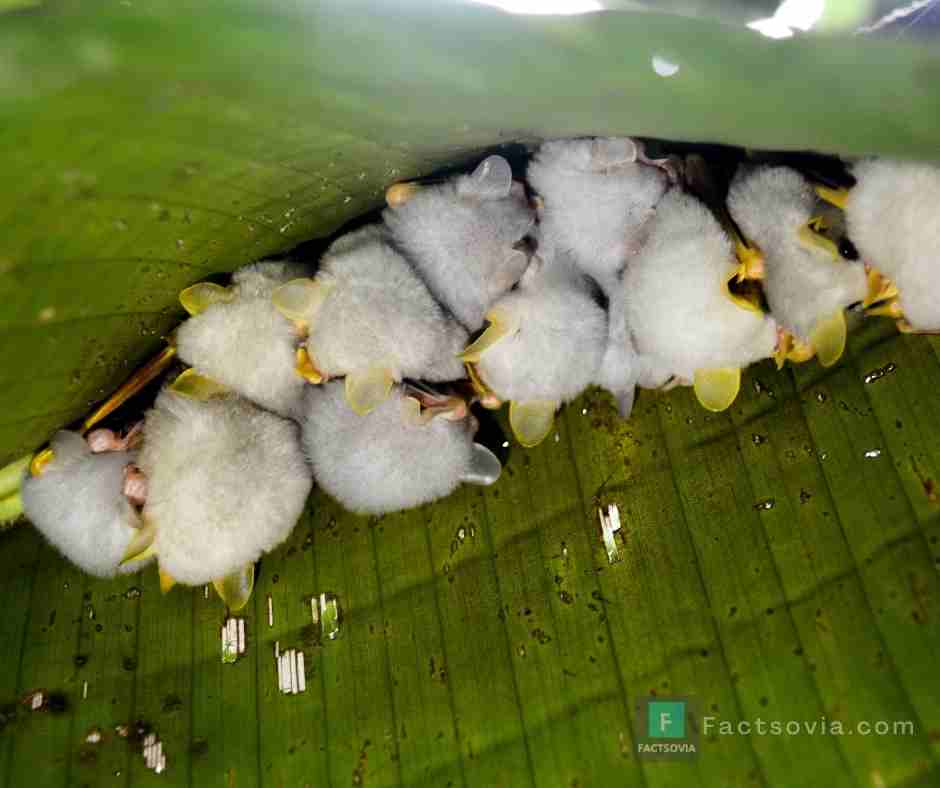
This is a small, insect-eating bat that is native to Central America. It is known for roosting in groups under large leaves, which they cut along the midrib to form “tents”. The bats are white or pale yellow in color, with a distinctive orange nose and ears.
Honduran white bats, also known as Caribbean white tent-making bats, have distinctive, entirely white fur, which is a rare trait among the roughly 1,300 known species of bats. Their ears, nose-leaf, and lips have a bright yellow-orange pigmentation due to carotenoid deposition.
These bats are one of approximately 22 known species of bats that roost within “tents” made from the leaves of Heliconia plants. They strategically cut the side veins of the leaves to fold them into tents, where they roost during the day. These tents provide protection from predators and rain.
Honduran white bats are found in Central America, specifically in Honduras, Nicaragua, Costa Rica, and western Panama. They inhabit wet evergreen forests and secondary forests at elevations from sea level to 700 meters (2,300 feet) above sea level.
The Honduran white bat is a specialist frugivore, meaning it primarily feeds on fruit. It specializes in consuming the fruits of a single species of fig tree called Ficus colubrinae, but it may occasionally consume other fig species.
The IUCN (International Union for Conservation of Nature) has categorized the Honduran white bat as “near-threatened.” The species is facing habitat loss due to human activities such as deforestation and agriculture, which is a significant factor contributing to its population decline. Additionally, the bat’s specific dietary and roosting requirements make it particularly vulnerable to habitat changes.
2. Ghost Bat (Macroderma gigas):
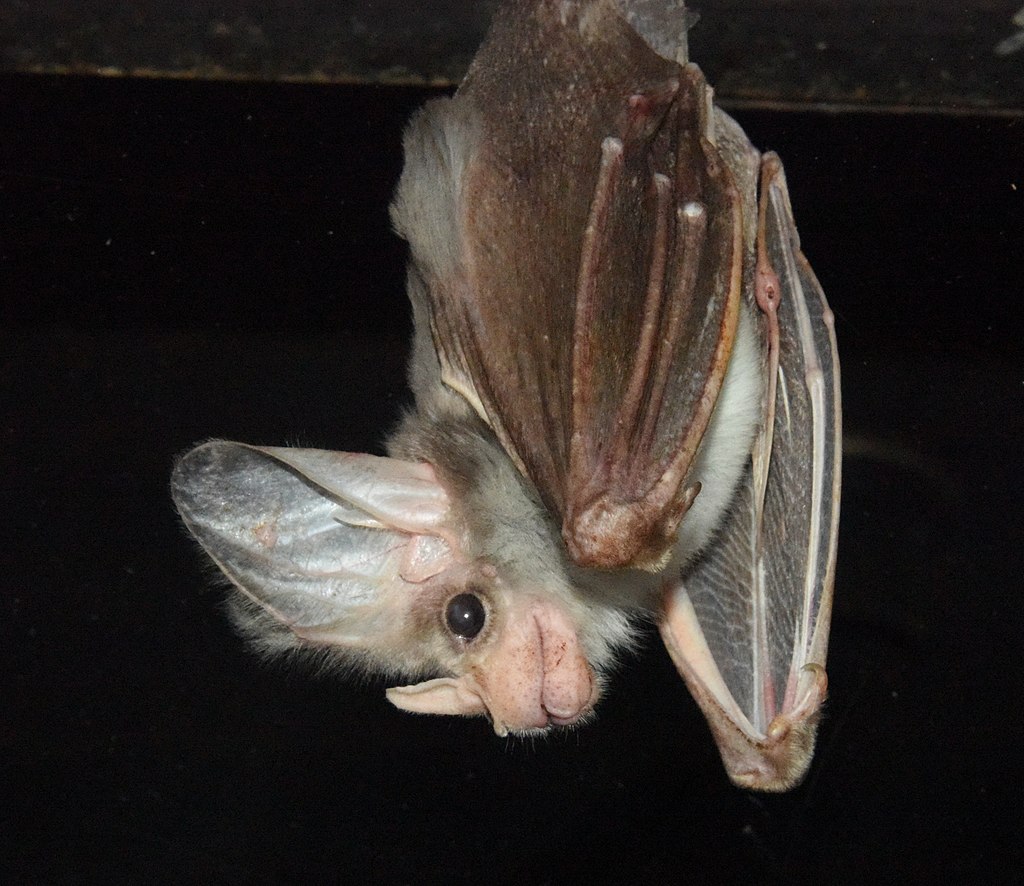
This is a large, carnivorous bat found in Australia. It is also known as the false vampire bat due to its large size and sharp teeth. The ghost bat has a distinctive white stripe on its back and pale grey or white fur on its underbelly.
The Ghost bat is the only Australian bat that preys on large vertebrates such as birds, reptiles, and other mammals. They use acute sight and hearing, combined with echolocation, to detect their prey while waiting in ambush at a perch.
The Ghost bat is a larger species of microchiropterans (microbats) and is the largest bat species in Australia. They have elongated, large ears that are twice the length of their head. The fur color ranges from mid to dark grey on the back and paler on the front.
The bat is classified as Vulnerable on the IUCN Red List. Its recorded range has significantly contracted since it was first described in 1880.
The Ghost bat is endemic to Australia and is found in three population centers: the Northern Pilbara and Kimberley in Western Australia, the Top End of the continent, and in Queensland.
They usually occur in small isolated pockets within each region, and their distribution patterns have changed due to ecological changes resulting from increasing aridity.
3. Northern Ghost Bat (Diclidurus albus):
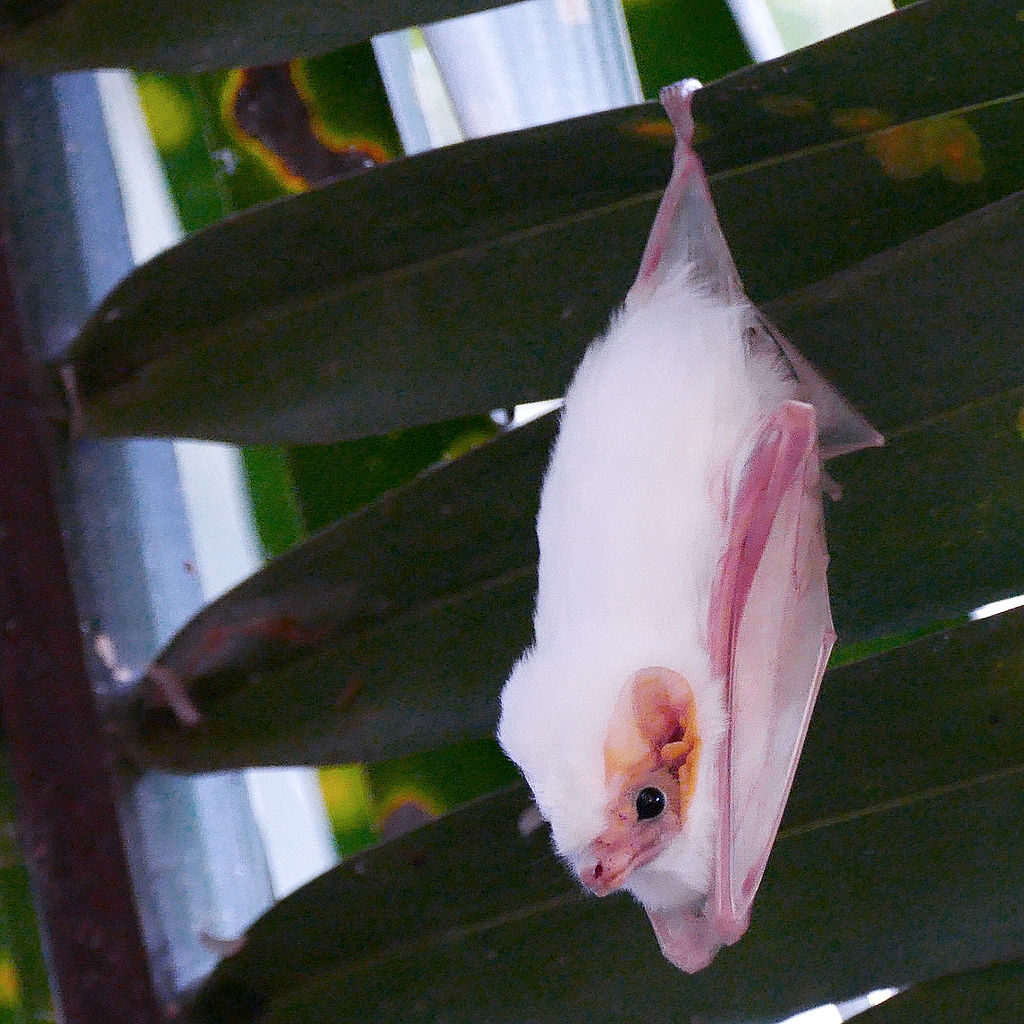
This is a small, insect-eating bat found in Central and South America. It is also known as the white bat or ghost-faced bat due to its distinctive white face and pale fur.
The Northern ghost bat is relatively rare and completely white or pale grey in color, with some dark-grey basal pelage. It lacks wing-sacs, but instead has a large glandular structure located centrally with respect to its uropatagium.
They inhabit tropical and coastal forests. They frequently roost in caves, in the open, or in palm trees. When roosting in palm trees, individual bats tend to occupy the space closest to the stem of the palm frond.
The range of the Northern ghost bat is confined to the neotropics. It can be found as far north as the tropical mainland of Mexico and as far south as the tropics of Brazil. Its distribution is limited relative to other members of its genus.
The Northern ghost bat is an insectivore that primarily feeds on moths. It flies high above the ground in open spaces when feeding, usually in a straight fashion. In Costa Rica, it is known to sing when feeding, and the sounds it makes during its songs are thought to be unique to the genus.
4. Greater white-lined bat (Saccopteryx bilineata):
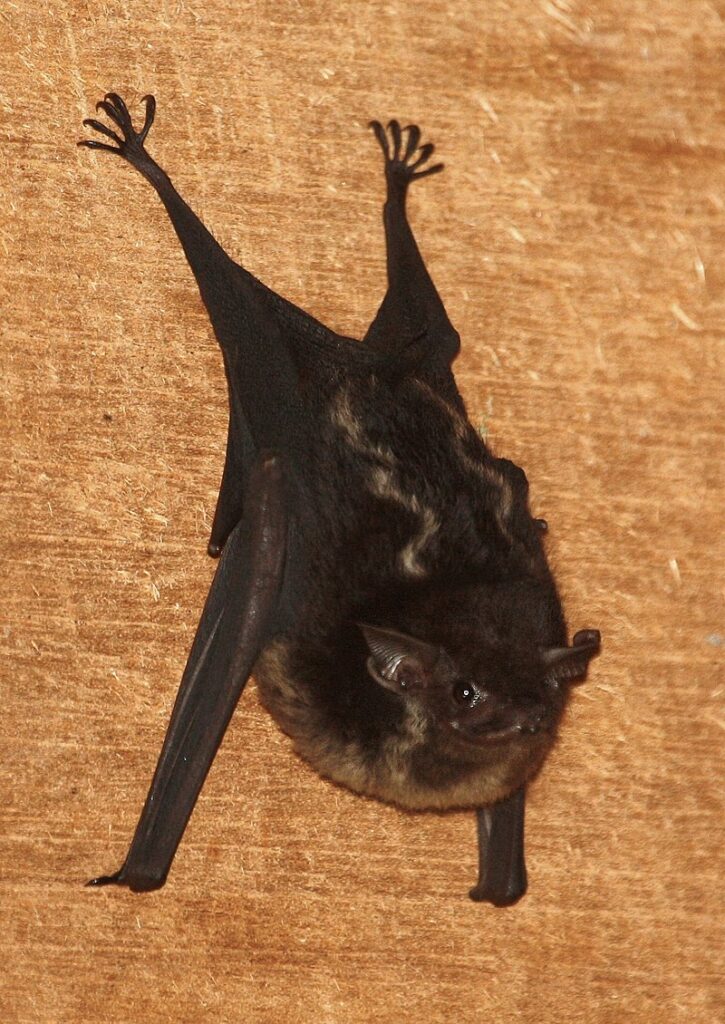
This is a small, insect-eating bat found in Central and South America. It has white or pale fur on its underbelly and a distinctive white stripe along each side of its body.
Saccopteryx bilineata is a relatively small bat with black fur that fades to dark brown with age. It is commonly referred to as the Greater White-lined Bat due to two characteristic dorsally located white lines spanning the length of its body between the shoulders and rump. The ventral side of its fur is a blend of brown and grey. The ears are large, and the muzzle is simple.
It is a neotropical species native to parts of Central and South America. Its range extends from southern Mexico to Rio de Janeiro in Brazil, including the Caribbean region, particularly Trinidad and Tobago.
These bats are generally found within or near tropical forests and water sources at low altitudes. They roost in tree cavities, caves, and buildings. The species is nocturnal, roosting during the day and feeding at night. They forage around vegetation, and foraging lasts for 2-3 hours with several periods of approximately 25 minutes.
The Greater Sac-winged Bat is strictly insectivorous, feeding on flies, beetles, butterflies, and moths. It feeds with greatest frequency on the most abundant prey insects in its foraging area. Echolocation is used by the bat as a means of finding prey.
Females have free choice of mates, and males have evolved intricate mating gestures involving filling their wing sacs with urine and other glandular secretions to win over females. The gestation period coincides with the beginning of the rainy season when food is more readily available.
Each female gives birth to only one offspring, which develops during the period of maximum food availability. Offspring are capable of flight by 2 weeks of age, and weaning occurs at 10-12 weeks.
5. White-winged Vampire Bat (Diaemus youngi):

The White-winged vampire bat has clay-colored to dark cinnamon-brown fur with white wing outlines and a membrane between its second and third fingers. It has 22 teeth, which is unique among all bat species.
This is a small, blood-eating bat found in Central and South America. It has pale fur on its underbelly and distinctive white patches on its wings.
Found from Mexico to northern Argentina, including the islands of Trinidad and Margarita. It inhabits a variety of habitats, including moist open areas and dry forests.
Like other vampire bats, it feeds on the blood of birds and occasionally mammals. Their saliva contains compounds that dissolve blood clots and prevent clotting during feeding. They have cup-shaped scent glands in their mouths, which they use as an anti-predator defense.
White-winged vampire bats are social animals and roost with many other bat species. They are not as adept at quadrupedal locomotion as other vampire bats due to their shorter thumbs. Females are polyestrous and can become pregnant multiple times a year.
The species is assessed as “Least Concern” by the IUCN due to its broad distribution and tolerance of various habitats. They can be maintained in captivity, and captive populations can be supported with cow and chicken blood.
Final Thoughts:
White bats demonstrate amazing adaptability across various habitats. Protecting their homes and food sources can help guarantee the future of these elusive winged mammals. Taking time to appreciate and learn from wildlife like white bats highlights nature’s ingenuity.
External sources:
Amazon and the Amazon logo are trademarks of Amazon.com, Inc, or its affiliates.
